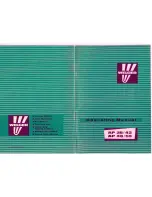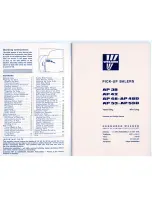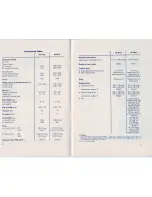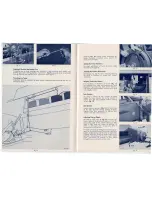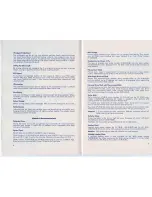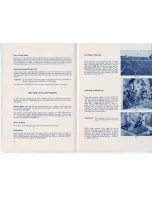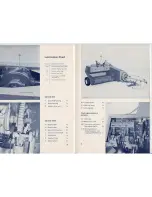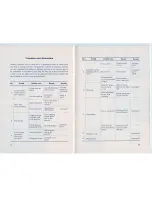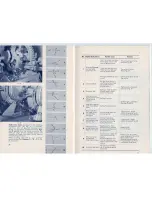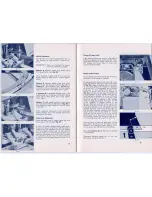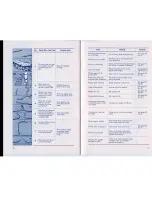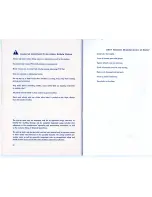
Preparing
tor
Work
Balersare thoroughlytested and carefull
r
lubricated before leaving our werks and
are ready tor immediate service at fu,l capacity when observing the following
instruetions.
4
Attaching the Baler
Connect to traetor possibly without play, usa
the same dia. hole in traetor
drawbar
and
baler drawbar
are. Standard
fitting on baler
22 mm dia. drawbar
eye (also available
with
32 mm dia. hole).
Stabilize traetor
hitch or drawbar.
Set baler
info horizontal
position by turning handle 2
(fig. 1) and conneet to tantra of traetor hitch
or drawbar.
If necessary re-set hitch on baler
drawbar according to height, side displacement
can be made up to 160 mm. Secure safety chain
of conneeting pin around
front of drawbar.
Retraet jack till stop by turning handle 2 (fig. 1).
Positioning Drawbar
Release bell 3 (fig. 2) and lock (operation of
bell 3 is also possible with a puUing rope from
traetor seal). Swing baler info position A or B
and re-positi,on bell 3 again.
ATTENTION!
Usa drawbar jack when storing baler, mind pin-
thing po,ints on swivel drawbar.
Hydraul,ic operated
drawbar shifting device is
ava,i:lable as specia,! equipment
tor
AP 53.
ShiUing device
is opera ted through
traetor
hydraul,ic. The traetor
must be equipped with
double aeting hydraulic valve.
1
FiHingthe Universal Drive Shaft
Clean splines on traetor and baler pto from
proteeting grease. Press in slide pins and fit
joints on both stubs (fig. 3), slide pins must snap
info position. Secure safety chai,n on to draw-
bar. Fold joint prop 4 away to the rear as
shown in fig. 1, see arrow.
Clearance between pro
end and traetor draw-
bar hole (distance C in fig. 3) should be 330-
600 mm. Usa Ionger pro shaft (size h) if distance
is more thon 600 mm. If i.t is smaller thon
330 mm, fit a drawbar
extension. Telescoping
length of PTO-shaft tubes (distance D in fig. 3)
should be at least 300 mm when driving straight
ahead. If necessary, shorten shaft by cutting off
equallengths
from euter and inner tubes.
Cleaning KnoHers
Carefully clean knotter beaks and twine re-
tainers (see arrows in fig. 4), so thaI the twine is
securely held and cannot wind round the twine
retainer shaft.
~
"
Inserting Twine Spools
Only usa baling
twine of best quality, see
technical data
page 3. Place tour spools of
twine (fig. 5) side-by-side in upright position
info the twine box (wrongly inserted spools may
lead to tangled
twi.ne and
breakage).
Four
balls of twine can be stored in the additional
twine box (AP 53).
Pull twine end from spool E out of paper cover
and
join to twine start of spool F (conneet
spool G and H in the same manner).
Plastoietwine allows any normal knot, but a
special knot is recommended tor si,sal twine as
fellows :
Rough up and untwist both ends. Make a single
knot, spließ and roll open ends together
as
per fig. 6. Now hold ends closed (fig. 7) and
fighten the knot slowly.
Give knot a final hard lug and roll proieeting
ends between hands. Properly made, this spe-
cial knot (fig. 8) is hardly thicker thon the twine
itself.
I-
fig.4
fig. 5
fig. 6
fig, 7
5
Summary of Contents for AP 38
Page 1: ......

